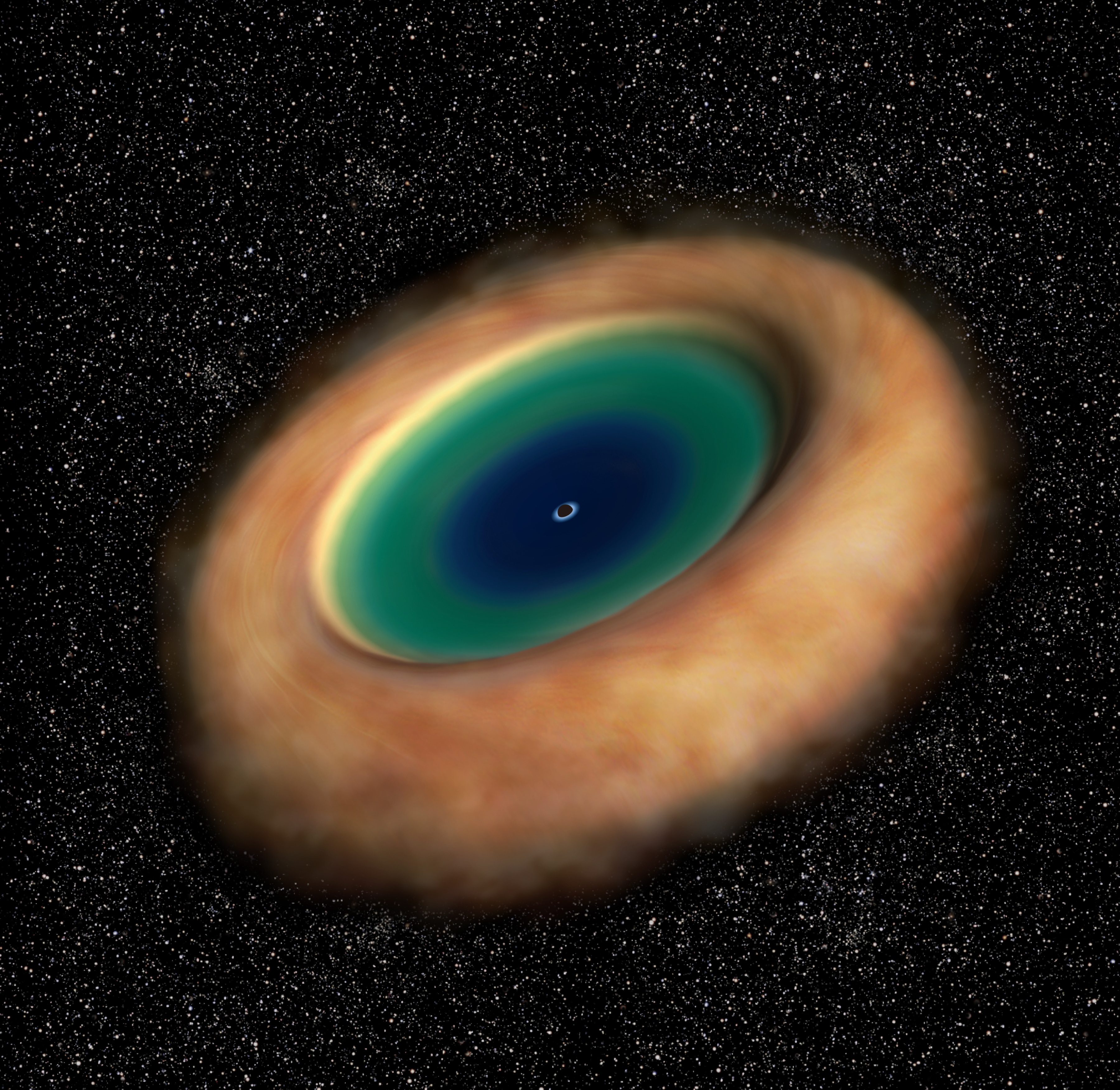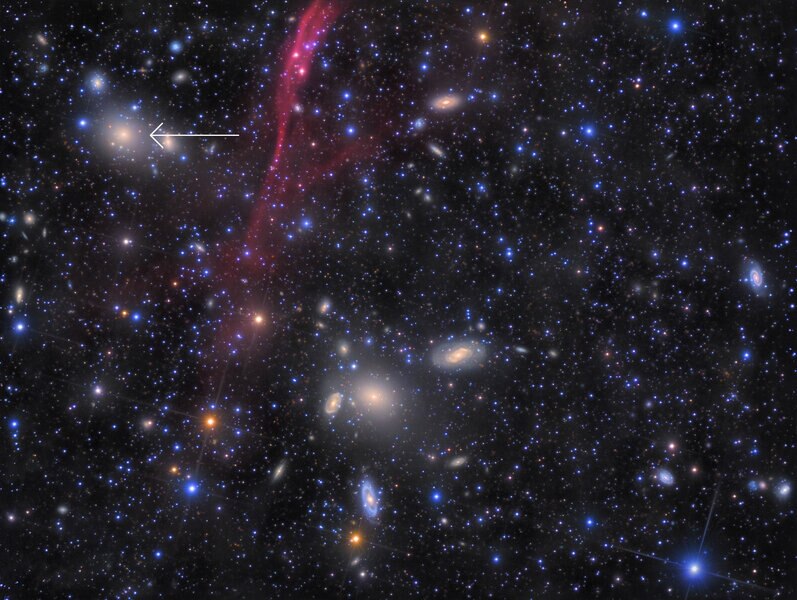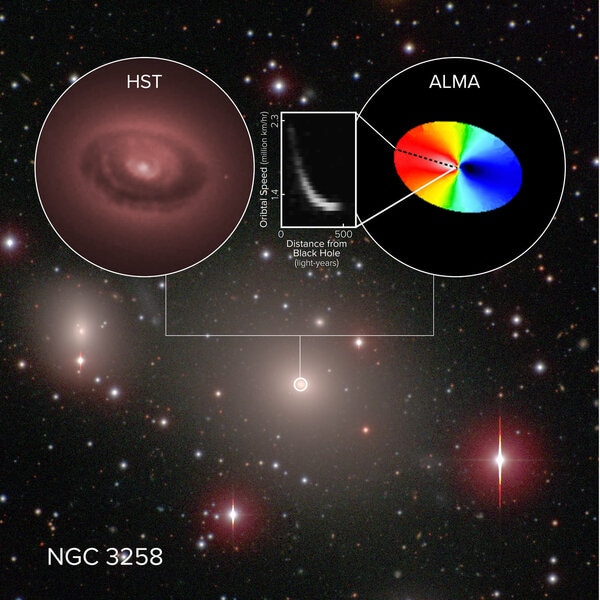Create a free profile to get unlimited access to exclusive videos, sweepstakes, and more!
Measuring a monster: The two *billion* solar mass black hole in NGC 3258

In the late 20th century, it started to become clear to astronomers that every big galaxy in the Universe has a supermassive black hole in its center. These are not like the ones that form when massive stars explode, which have a few times the Sun's mass. These are soul-crushing monsters, with millions or billions of times the Sun's mass.
In the years since, we've learned a lot about them. We think they form along with the galaxies, growing as their host galaxies do, with each influencing the other over time. Material dumped into the black hole piles up in a disk around it, and this disk can get so hot it glows with incredible ferocity — they can be the most powerful single objects in the Universe. This affects how stars form in the galaxy, how material like gas flows in the galaxy, and more.
Our knowledge of all this depends strongly on just how well we can measure the masses of these beasts. That's not always easy to do. A lot of the times we measure the effects they have on things around them, but that in turn means relying on complex models of how these things behave. The simpler we can make these analyses, the better.
Using ALMA, the Atacama Large Millimeter/submillimeter Array, astronomers have done just that: They made very precise measurements of the central supermassive black hole in a galaxy called NGC 3258, and found it to be a staggering 2.25 billion times the mass of the Sun!
NGC 3258 is about 100 million light years away, and is one of the largest galaxies in the Antlia cluster, a collection of roughly 250 galaxies. It's an elliptical galaxy, meaning it's spheroidal, like a distorted, flattened sphere.
Deep in the center of NGC 3258 is a supermassive black hole, and fortunately for astronomers there's also a huge disk of cold gas swirling around it. This disk is truly huge, almost a thousand light years across, and that makes it very useful for figuring out the black hole's mass. In simple terms, the more mass the black hole has, the more gravity it has, and the harder it pulls on material orbiting it. That affects the velocity this stuff revolves around the black hole, so if you can measure that (and the distance it is from the black hole) you can work backward to get the black hole's mass.
The beauty of ALMA is that it's sensitive to this kind of cold gas, which emits light at just the wavelength ALMA sees. Not only that, but ALMA has exceptional eyesight, able to resolve details on very small scales. And on top of that it can pick out the individual wavelengths of light it sees, which is the key to this observation.
The astronomers used ALMA to peer into the heart of NGC 3258, looking at the emission of carbon monoxide (or CO), which is one of the molecules in the cold disk. CO emits light at a specific wavelength, and as it whips around the black hole the light it emits is redshifted when it's in the part of its orbit moving away from us, and blueshifted when it heads toward us. By measuring that shift in the light from CO they can determine the speed of the gas, and crucially the speed of the gas at different distances from the black hole. The outer part of the disk is moving at about 350 kilometers per second around the black hole, but closer in, the inner part is moving close to a whopping 500 kps! At that speed, you could cross the continental US in about 10 seconds.
And, in the end, that allows a very accurate measurement of the black hole's mass, which is how the team determined it's a brobdingnagian 2.25 billion solar masses.
They also carefully looked at all the places there were uncertainties in their methods, and found a formal uncertainty of a mere 0.18%, which is incredibly accurate. Now that's from the methods they employed, which is fantastic, but the real problem is that we don't know the distance to the galaxy accurately. That adds a far larger uncertainty of 12% to their measurements. Ouch.
But the good news is that the method itself is extremely accurate, so if it's used on a different galaxy where the distance is better known — or, in the future, if we get more accurate distance to galaxies in general — then we'll have far better knowledge of just how hefty these critters are.
Mind you, the Milky Way has a supermassive black hole in its core, too, but ours is a lightweight 4 million solar masses. It's weird ours is so low-mass — the Andromeda Galaxy, which is about the same size and mass as our galaxy, has a central black hole at least 100 million times the Sun's mass, so it's way bigger than ours. Perhaps observations like this will nail down why ours is so puny in comparison.
I love stuff like this; the idea that galaxies all had the monsters in their middles started becoming popular when I was in college … and now we know vastly more about them. We even have images of one, and we see them everywhere. Things like this always make me wonder what other revolutions in our thinking are out there, waiting for us to figure them out?
[Correction (August 10, 2019): I originally misidentified NGC 3258 in the deep Antlia Cluster image. I corrected that, and the arrow now points at the right place. Thanks to Rolf Olsen, who took the image, for pointing that out.]




























